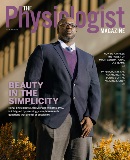Taking Its Toll
Mental health crisis overwhelms college campuses, as students and professors feel the burden.
By Glenn Cook
Patrick Crosswhite, PhD, is the first to tell you he’s not a mental health expert. As an associate professor in Gonzaga University’s Department of Human Physiology, he has not done research or received formal training on how to address the issues his students face.
“In my doctoral studies, I had very little training on how to be an educator, and I definitely didn’t receive training on being a frontline or first responder to a student’s mental health crisis,” says Crosswhite, who has worked at Gonzaga for seven years. “A lot of educators have a lot more hands-on experience in this area than I do.”
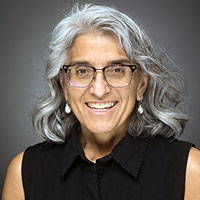
“Everything is so uncertain, and the ambiguity has added an additional layer of stress that impedes [students’] learning and ability to focus.”Alice Villalobos, PhD
But, like many of his peers, Crosswhite has found himself talking to students more about their mental health and wellness challenges over the past several years. And those challenges are acute, researchers say, with increased levels of depression, anxiety and suicidal ideation as students reacclimate to college and university life following the disruption of the COVID-19 pandemic.
“It is getting worse and worse and worse,” says Mac Murphy, a research coordinator at the Healthy Minds Network, an organization that collaborated with Boston University and the Mary Christie Foundation on a 2021 study about student mental health in higher education. “The crisis is not abating. If anything, it’s been ramping up for several years now.”
The study gathered responses from 1,700 faculty members at 12 colleges and universities with enrollments of 2,000 to 20,000. The findings showed that 87% of professors found student mental health had “worsened” or “significantly worsened” during the pandemic. Concern about mass shootings and social justice issues, in addition to the financial and social struggles undergraduates and postgraduates face, has only added to student angst.
“The pandemic revealed the type of stress and unrealistic expectations students have placed on themselves,” says Alice Villalobos, PhD, assistant professor of medical education at the Texas Tech University Health Sciences Center. “And now, even in this new normal, everything is so uncertain, and the ambiguity has added an additional layer of stress that impedes their learning and ability to focus. It does take some sensitivity on our part to meet them where they are.”
About 80% of those surveyed said they had one-on-one phone, video or email conversations with students about their mental health and wellness, with almost half feeling like they were not qualified to recognize those in emotional or mental distress.
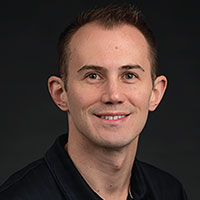
“It has placed a heavy burden on my end, having to serve in that capacity unofficially without training or minimal training, even though I’m fortunate to work at a university where support is available to students.”
Patrick Crosswhite, PhD
“We’re in contact with these individuals day to day and week to week, and students are more open and willing to come talk to us about the issues that are affecting their ability to perform in the classroom,” Crosswhite says. “It has placed a heavy burden on my end, having to serve in that capacity unofficially without training or minimal training, even though I’m fortunate to work at a university where support is available to students.”
Pandemic effects linger
When campuses shut down in March 2020, the day before spring break started at Texas Tech, Villalobos was teaching undergraduates on the main campus. In July 2021, she took on a new role as an assistant professor at the university’s Health Science Center.
“Many of our students started their medical training in the middle of the pandemic, and we all sort of scrambled to make the necessary adjustments,” she says. “It was stressful dealing with the ambiguity of life and the unknown.”
Villalobos says she started to suffer from “screen fatigue” and “trying to literally read what was on my students’ faces” during what seemed like never-ending Zoom calls. She saw that her students were dealing with the same challenge.
“For our undergraduates, it was very unsettling. Whether they had a supportive group or not, it was an anxious time for everyone,” she says. “I was nervous, too, but I tried to be forthcoming and honest and transparent. I said we were all in this new experience together, and if we don’t know something we’ll learn it together.”
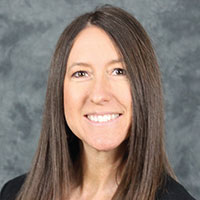
“During the pandemic, we had a lot of opportunities for training on the practicalities of teaching and ways to support students, helping the faculty define compassionate policies and appropriate amounts of flexibility. When the mass shooting happened, they went up another level, with extra counseling services, workshops and seminars for faculty. We were forward thinking in real time.”Erica Wehrwein, PhD
Villalobos says Texas Tech has been very clear about her role in dealing with student mental health concerns. The university has mental health professionals on staff who are focused on wellness, and her school has a clear chain of command if someone needs help beyond what she can provide.
“My responsibility is to start a conversation with students that is focused on academics. My job is to stay on point using positive, constructive language, listen carefully and be aware of the things that are stressing them out. If I pick up on anything that is serious, I can call our associate dean and our Office of Student Affairs, and they can get support from a faculty member who is better trained to discuss what they need than I am.”
Crosswhite says similar processes are in place at Gonzaga, a liberal arts Catholic Jesuit institution. He says he is fortunate “not to be expected to be an expert on all things outside the classroom, including mental health” and notes that the university has offered professional development on resources available to faculty.
“When I’m talking to a student and the situation has risen to a point where it is affecting their performance or their ability to learn and process information, but is not yet a crisis situation, I try to talk to them as just a fellow human being, not as a faculty member,” he says. “If I feel it’s beyond my ability to help them navigate what they’re going through or if I feel they need professional help, then I can physically walk them to our student health center.”
Murphy says students “are really starting to close the gap for themselves” by actively talking about their mental health, a sign she finds encouraging. Another bright spot: Data from the 2021 study and other research show that college and university students are actively working to find community.
“Community is really important, and you will need support,” Crosswhite says. “I tell all of our students, ‘If you try to navigate higher ed for the next four years on your own without support, you will encounter challenges. And that is especially true for first-generation college students, those coming from underrepresented or minority groups, and those coming from a situation where it is harder to find an ally or support network.”
Vulnerability after a mass shooting
Erica Wehrwein’s research focuses on the connection between breathing and the nervous system, how mindset and personality impact physiological health outcomes, and the neural control of blood pressure. She says studying how personality, mood and emotions “intersect with how the body works” led her to change the way she teaches even before the pandemic.
“Going way back, I’ve always been strongly interested in how the science of physiology and psychology intersect and overlap,” says Wehrwein, PhD, associate professor of physiology at Michigan State University. “We know students can’t learn well when they’re emotionally unwell. When they are forced to deal with an extreme traumatic event or grief process, they can’t engage in learning in a meaningful way.”
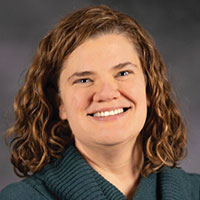
“One thing that we learned from the training is that trauma hits everyone differently, and I tried to emphasize to my students that it comes in waves.”Jennifer Doherty, PhD
Wehrwein and her colleagues at Michigan State have seen this firsthand. In mid-February, a gunman killed three students and injured five others in a shooting on campus. School was closed for a week as the university worked to provide faculty and staff with trauma-based training on what to do when students returned.
“During the pandemic, we had a lot of opportunities for training on the practicalities of teaching and ways to support students, helping the faculty define compassionate policies and appropriate amounts of flexibility,” Wehrwein says. “When the mass shooting happened, they went up another level, with extra counseling services, workshops and seminars for faculty. We were forward thinking in real time. Overall, they’ve done a great job with that.”
Having a week between classes was critical for Assistant Professor Jennifer Doherty, PhD, who is in her first year at Michigan State after working for almost a decade at the University of Washington.
“I felt really supported with the resources and training that was made available to us,” says Doherty, who teaches beginning biology classes. “We talked about the physical signs of psychological trauma, what students and we would be feeling, and the current research that is out there on treating trauma. It helped me design a way back for what I would do in my classroom.”
Doherty says half of her 48 students returned in person on the first day and 12 attended via Zoom. That day, she talked about her feelings and vulnerability and urged students to do the same.
“One thing that we learned from the training is that trauma hits everyone differently, and I tried to emphasize to my students that it comes in waves,” she says. “I also told them we were going to slow down. Normally, we would have moved faster through the content, but I took about a month of the coursework out. We moved exams back until after spring break and recorded all of the classes so students could stay caught up if they weren’t here. I was flexible.”
When she arrived last fall, Doherty implemented a standards-based grading structure that offers retakes on tests without penalty. “It makes the class more equitable for students,” she says. “If someone has a bad day and it happens to be on an exam day, they’re not punished for it. It helps them to focus on learning and not on points, and it gives them grace when they have these problems.”
Extending that grace is a key factor in dealing with after-effects of trauma and stressful situations that can affect mental health.
“It really hit me at that point that what we are doing with this approach is really important. It was helpful to my students who needed it in the fall,” Doherty says. “It was helpful to everyone this spring. It was hard to put it in place, but given everything that everyone is dealing with, in terms of looking at our students and their mental health, it’s important to do.”
Wehrwein says changes she made in her teaching style during the pandemic were helpful as she tried to navigate the aftermath of a mass shooting. She has a “no questions asked” late pass that allows students to turn in their work on their own time without penalties. Lectures recorded during the pandemic were made available to students who could not come to class. The university also has implemented a grief absences policy that allows students dealing with the death of a loved one to contact a single person who then informs the faculty.
“The mass shooting was a breaking point for a lot of my students. It was absolutely heartbreaking,” Wehrwein says, noting she has spent a lot of time this semester talking about purpose. “When something like this happens, you have to have a great deal of intentionality—helping them realize that what has happened is painful and scarring. In some cases, it might be life-defining. At the same time, we have to reassure them and tell them they can get through this. They still have purpose.”
This article was originally published in the July 2023 issue of The Physiologist Magazine.
‘Where do faculty go when they need help?’
As critical as it is to meet student mental health needs, equally important is ensuring faculty are taken care of as well.
“In our field, scientists are trained as scientists, and then they move into teaching. Many don’t know that much about pedagogy and theory, and now they’re in a classroom and dealing with a very different ecosystem with their students,” says Erica A. Wehrwein, PhD, of Michigan State University. “It’s about balancing compassion with rigor and still being able to do our teaching.”
Universities need to encourage that approach and train faculty “how to be a broker of services,” says Mac Murphy of the Healthy Minds Network. Faculty should know where to send students “when a need arises rather than feel like they have to support the students by themselves,” she notes.
Burnout among faculty and staff can result in compassion fatigue, Murphy says. “Sometimes they’re not capable of being there for their students in the way the students need,” she says. “We have to recognize that students and faculty go hand in hand. It’s not either or. It has to be how can we support our faculty so they can support our students, and how we can support our students so they don’t have to lean so hard on our faculty?”
In a 2021 survey led by Boston University, almost half of the professors said their institutions should invest more in faculty mental health and well-being. Almost 30% of the professors said they had two or more symptoms of depression, and 20% said that supporting students in mental or emotional distress had negatively impacted their own mental health.
Murphy says colleges and universities should ask what professors are doing to protect their own mental health and well-being in such stressful times.
“Where do faculty go when they need help? What kind of days off do they need? What kinds of stressors are they facing? Universities need to understand these things too,” Murphy says. “Helping faculty and helping students goes hand in hand. Neither can be fixed without fixing the other.”
In the days following the February 2023 Michigan State shooting, Wehrwein says she definitely “got a little burned out.”
“One of the bigger challenges for me was finding balance,” she says. “In one sense, I was a victim of what happened on campus because I was teaching class that day, and I was dealing with personal grief, loss and trauma on my own while serving as a frontline supporter to my students. It was a tough balance to strike.”
Wehrwein says she was fortunate to have a community of fellow faculty members to turn to for support. She continues to meet with a small cohort regularly to share concerns and challenges and says universities should help in developing these groups.
“Having a supportive community has been very helpful to me,” Wehrwein says. “Broadly, we are collectively ill-equipped to deal with a pandemic or a mass tragedy. It’s easy to neglect yourself. How do you keep your own wellness in check? Most professors have never had to think of being a first responder or on the front lines in this way, but we are. And we have to find that balance, for ourselves and for our students.”
The Physiologist Magazine
Read the Latest Issue
Don’t miss out on the latest topics in science and research.
View the Issue Archive
Catch up on all the issues of The Physiologist Magazine.
Contact Us
For questions, comments or to share your story ideas, email us or call 301.634.7314.


